Visitacion Valley Mile Houses
Water for the horse, something stronger for the driver at these 19th century San Francisco roadhouses.
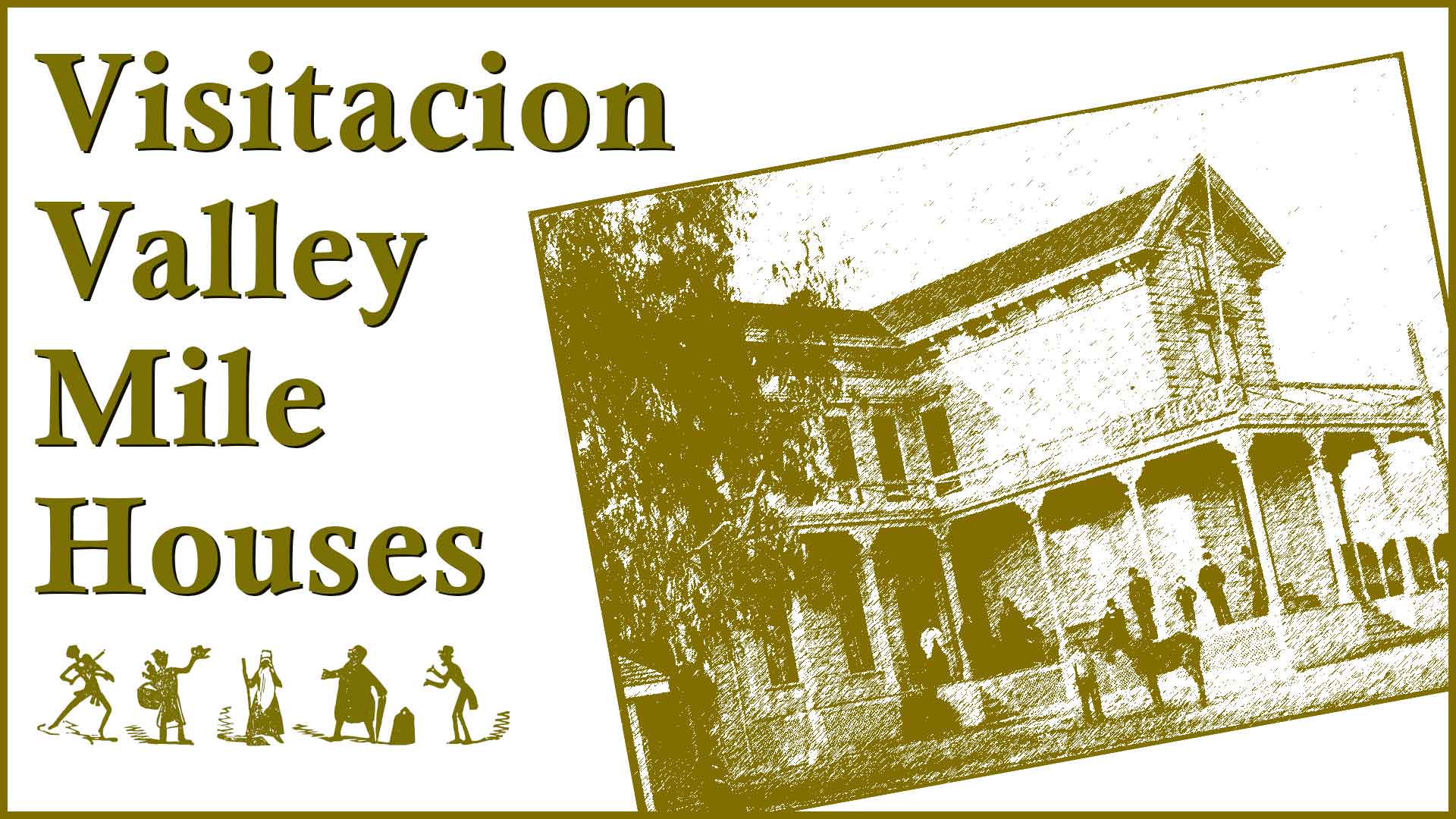
A couple of weeks ago I met a friend for coffee at Mission Blue on Leland Avenue. Whenever I am in Visitacion Valley I make sure to check on two remnants of one of my favorite San Francisco historical subjects: roadhouses.
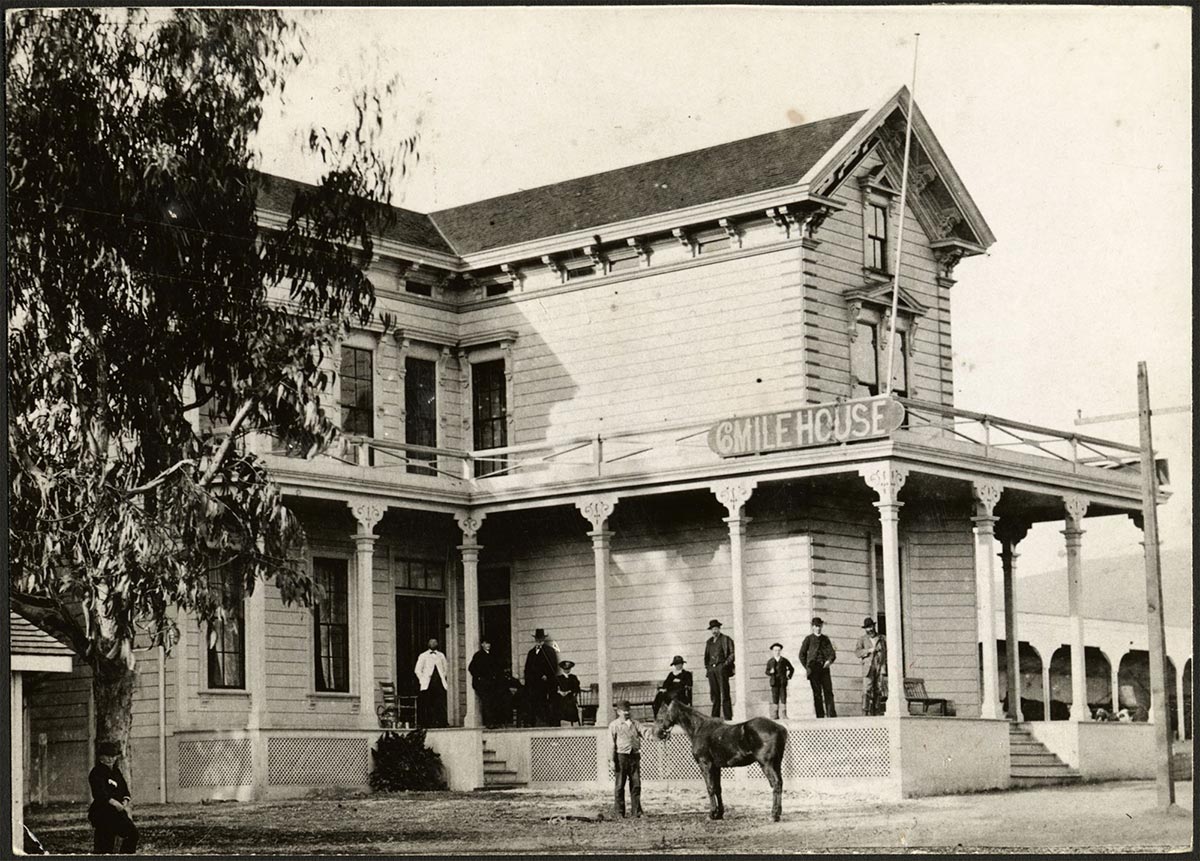
Most 19th-century visitors to San Francisco arrived by water, but if they were hoofing it up the peninsula, a major option was the San Bruno Turnpike Road through Visitacion Valley.
As with the San Jose and Mission Roads, the San Bruno Road had roadhouses up and down it, places to get water for horses and a stronger drink for their owners.
Many of these refreshment stops used a “Mile House” naming convention that noted how far they were from the city center, the traveler’s assumed destination or departure point.
Measuring the purported mileage to San Francisco’s heart—which at the time was Portsmouth Square—Mile Houses started as close as the One-Mile House at Mission and 5th Streets, a gauge which hardly seems worth the effort to note, and as distant as Millbrae’s 17-Mile House on El Camino Real.
Visitacion Valley had three of these mile houses. Two of the original buildings are still intact and one is still serving food and drink. Let’s take a look from north to south.
Five Mile House
3556–3564 San Bruno Avenue
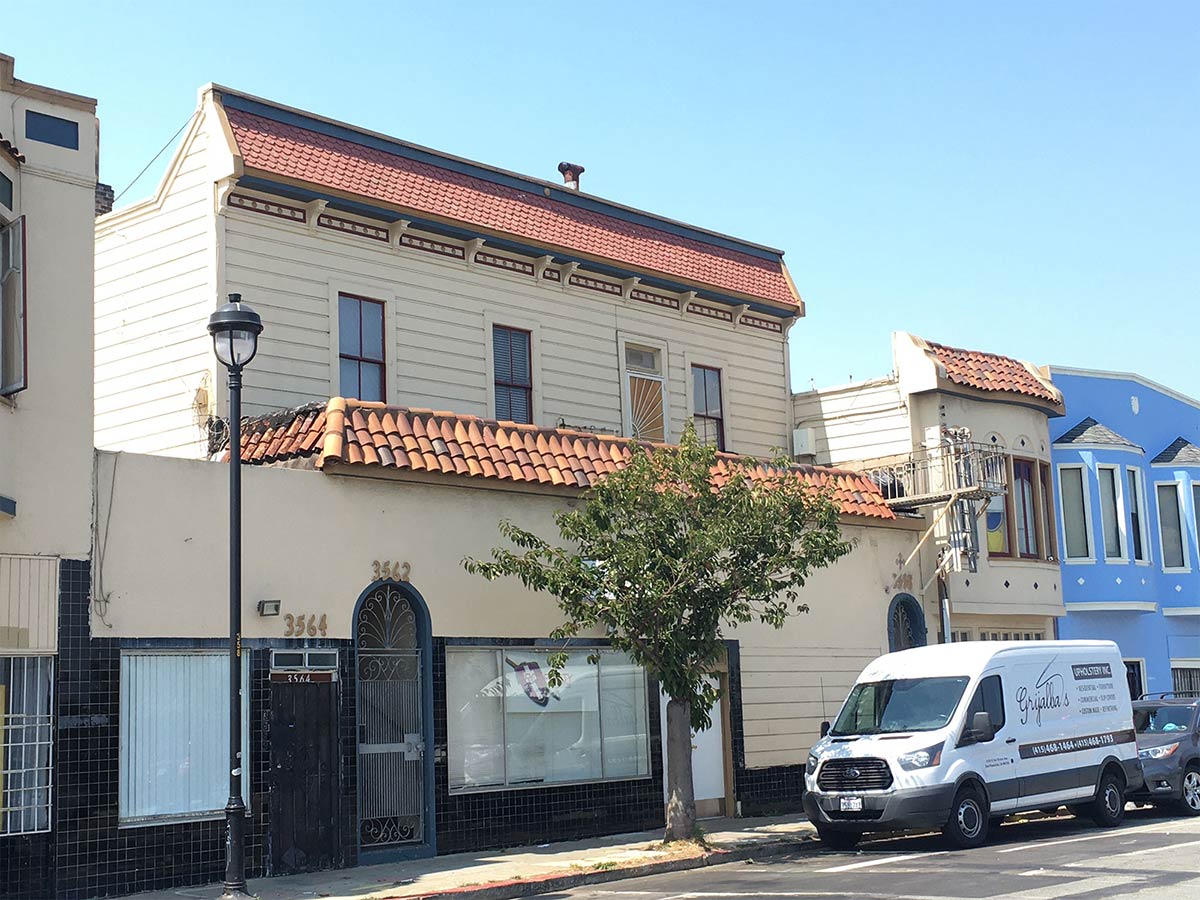
At one time there were two different Five Mile Houses operating on two different San Francisco roads. The larger and better known one was run by horse dealer and trainer Charlie Shear at the intersection of Mission Street and Silver Avenue, where the San Francisco Campus for Jewish Living stands today.
But as early as 1865, a Five Mile House served drinks on the San Bruno Toll Road, today’s San Bruno Avenue. At the top of a ridge out of Visitacion Valley and facing Bayview Hill, it was a popular stop for dairy workers (“Milk Dealers”) to have a drink after trudging up the incline with their wagons in the morning or heading back to the ranches with empty delivery cans in the afternoons.
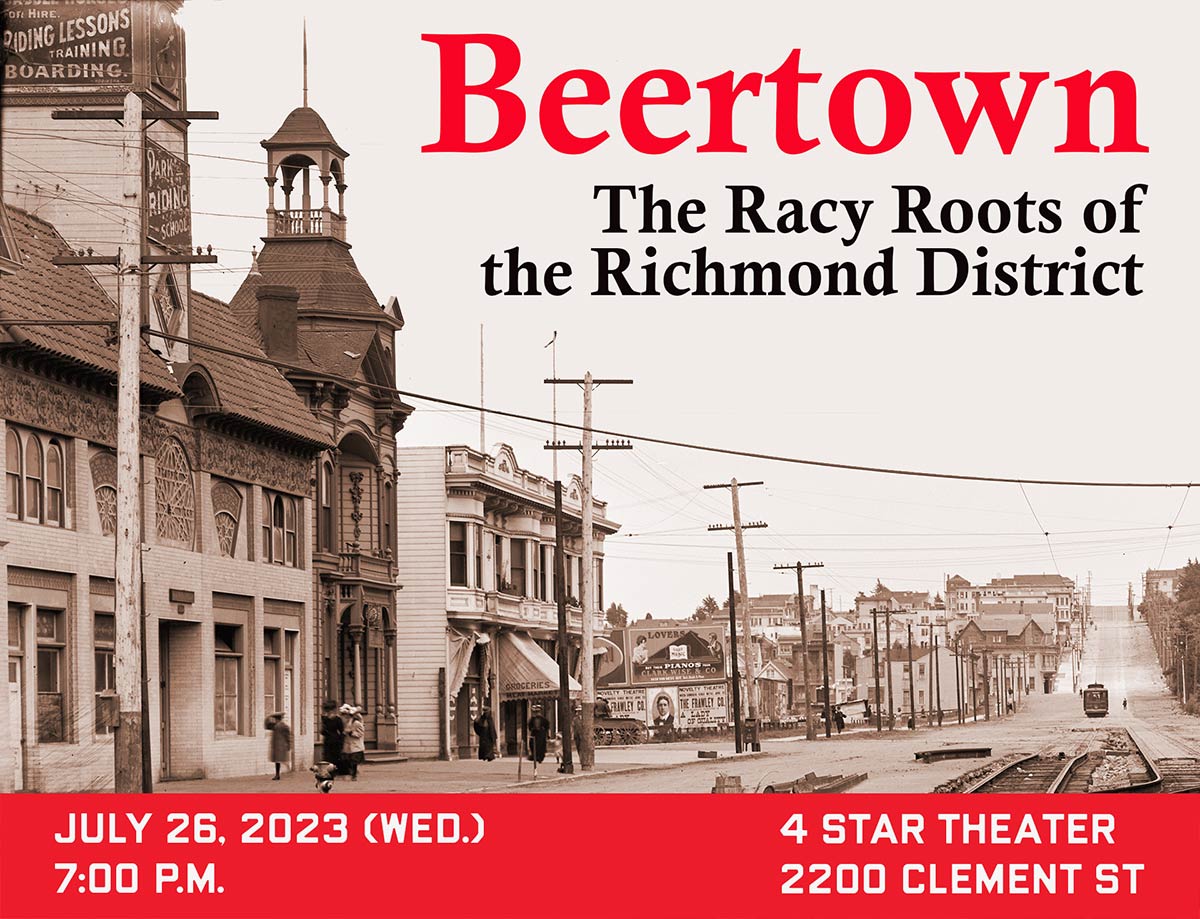
Five Mile House had a number of owners, operators, and business models over its 120-years of existence, but it was always, in essence, a bar. The original building burned down in 1896, replaced by the structure still standing in the middle of the 3500 block of San Bruno Avenue, now tucked behind a row of storefront additions.
The name lived on when the business relocated a block away to the ground floor of the skinny apartment building at 3600 San Bruno Avenue sometime just before World War II.
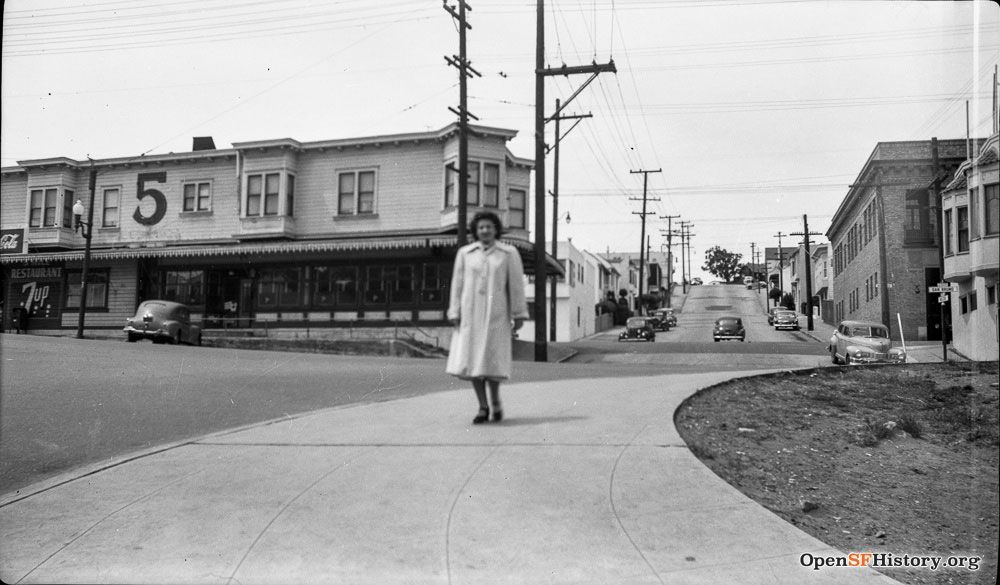
This later incarnation was still open when I was going to my first Giants games at Candlestick Park in the 1970s (not that I went inside as a ten-year-old). It may have lasted into the late 1980s. I’d love to hear more information on when it closed. If anyone chooses to fix up and reopen the Five Mile House, in either building, I’ll buy the first round.
Six Mile House
San Bruno Road (now Bayshore Boulevard) near Visitacion Avenue
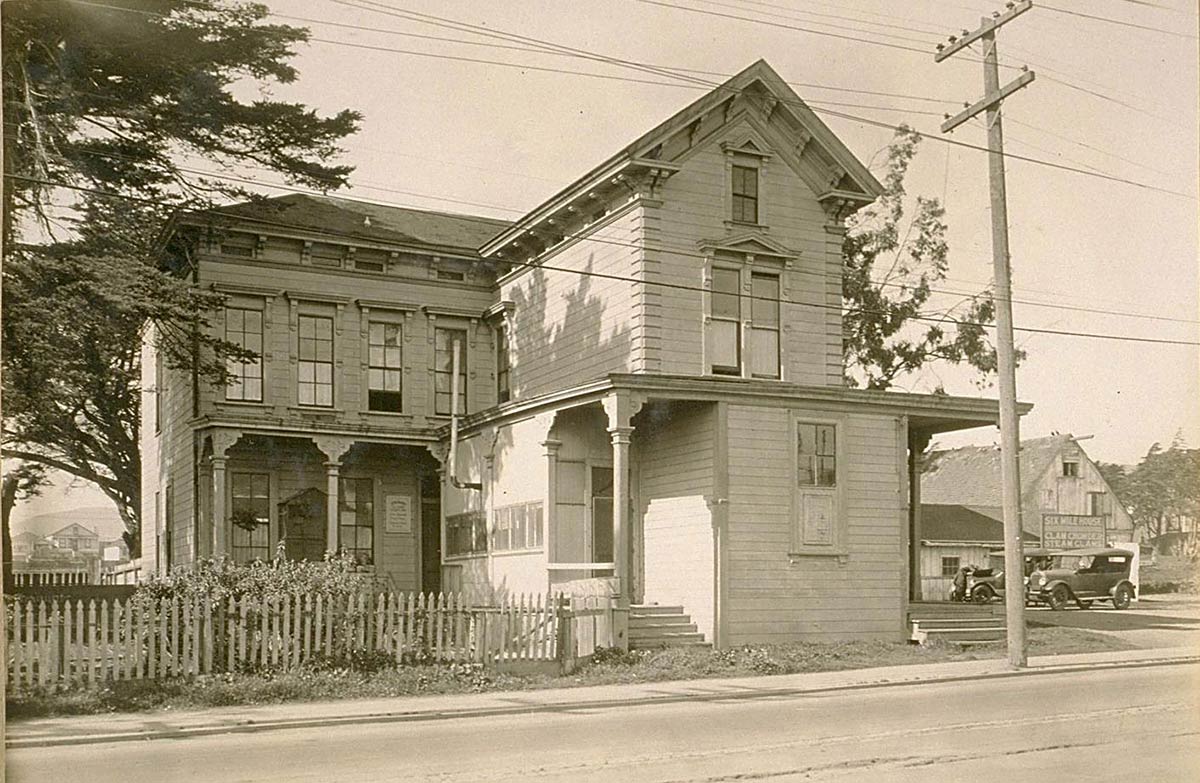
Henry “Pop” Blanken’s Six Mile House was a much grander affair than the Five Mile House and was often described as a “rural resort.” Occupying most of the block of what is now Bayshore Boulevard between Visitacion and Sunnydale Avenues, its grounds had shade trees, gardens, bowling alleys, trap shooting, and training facilities for boxers.
Blanken started his career as a roadhouse host with the Overland Mail House, a smaller place across the San Bruno road from the Five Mile House and named for where the long-distance mail carriers changed their horses.
The Six Mile House shows up on maps as early as 1861, although Blanken’s 1915 obituary claims his version of it opened on the Fourth of July in 1876. Drinks, lodging, and clam chowder were all available to those choosing to stop for an hour or a weekend.
Like many roadhouse proprietors, Blanken made a sideline as a “sporting man,” working with horse breeders, betting men, and boxing trainers who used his facilities for both occupation and recreation.
The historic building was demolished in 1938 for a garage and gas station, but nearby Blanken Avenue keeps Pop’s name alive.
7 Mile House
San Bruno Road (now Bayshore Boulevard) and Geneva Avenue
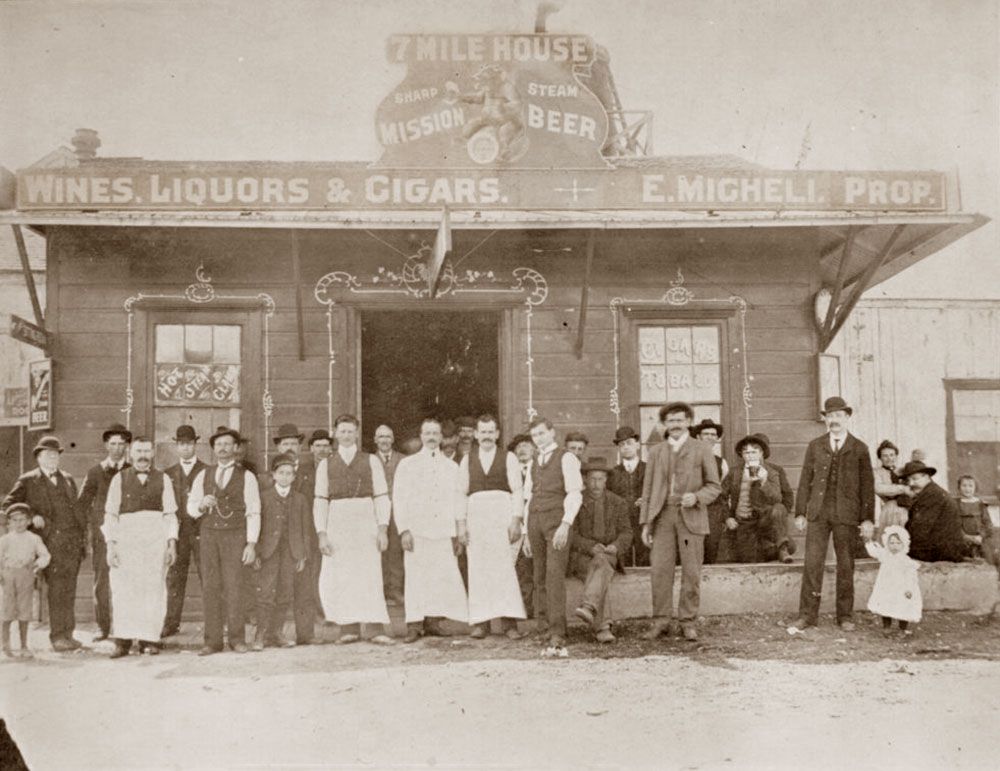
The still-thriving 7 Mile House is technically just over the county line in Brisbane, but it is in every way a fixture of Visitacion Valley life. Stories have been passed down that “the 7” started in the late 1850s. That’s likely when the San Bruno Road tollhouse was set up on the same spot, and the roadhouse probably grew out of that building.
The clientele for 7 Mile House has been very and proudly blue collar for its entire life: dairy and farm workers, hostlers and teamsters, blacksmiths, truckers, railroad and factory workers.
The building, whether it started as a tollhouse or not, has had additions and remodels over the decades, losing its gingerbread trim, but doubling in size and outdoor dining space.
Owner Vanessa Garcia is the latest owner. Since buying 7 Mile House in 2004 she has made it a welcome place for locals and travelers alike. Inside, old photos of the last operating mile house are proudly displayed. It’s one of my favorite spots for lunch.
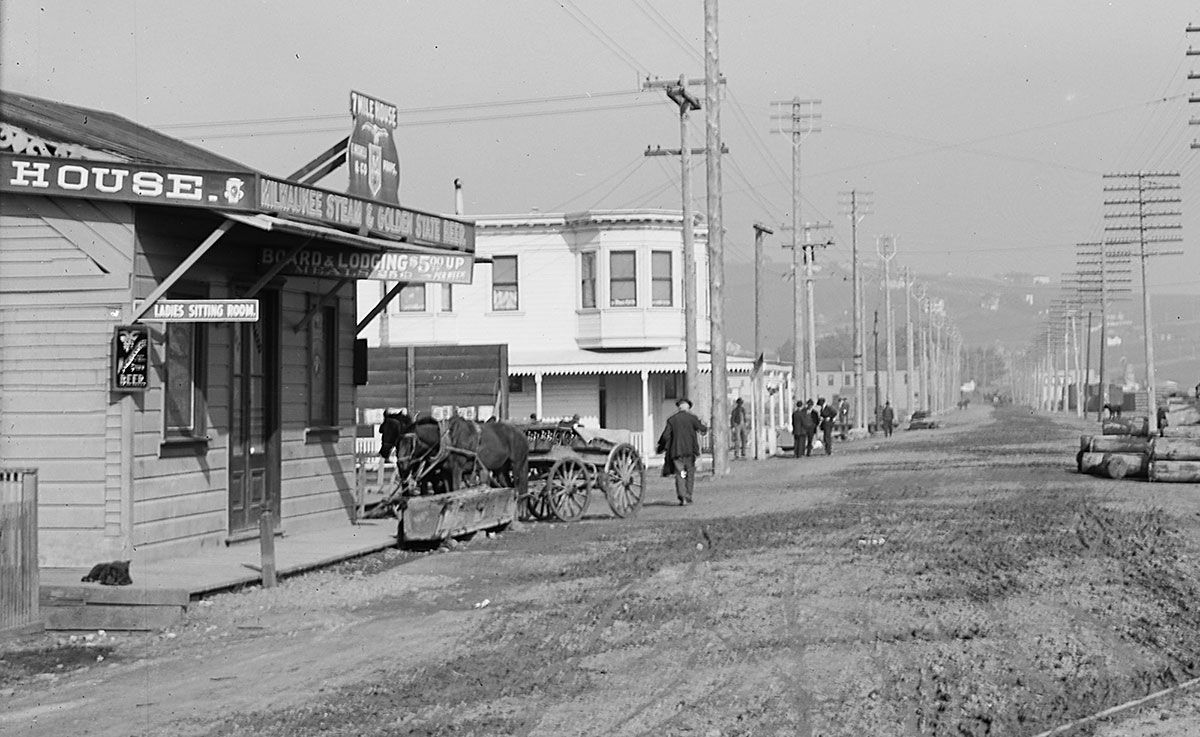
Although mile houses gave off an authoritative air with their numbered designations—implying some transit-related authority, maybe even that some surveyor was involved—their names were more marketing than map-making.
7 Mile House is not a mile from where 6 Mile House was—more like half a mile distant. Six Mile House was a similar distance from where Five Mile House stood. And none of the three is exactly five, six, or seven miles to Portsmouth Square or any other notable San Francisco landmark.
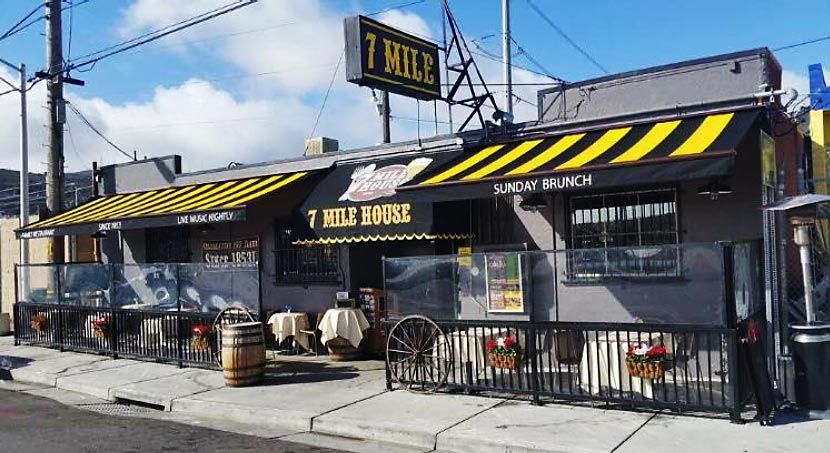
Woody Beer and Coffee Fund

If not for the generosity of people like Angus M. (F.O.W.), I might have watched some terrible streaming show about a dystopian future instead of buying these two gents a pint. We discussed historic buildings and Amtrak routes and those memories are now priceless. Kick in a few bucks and get me out of the house!
Sources
This a slightly altered post from one I wrote for San Francisco Heritage in 2021. We focused on Visitacion Valley for a month and got the neighborhood its first designated city landmark, yay.

